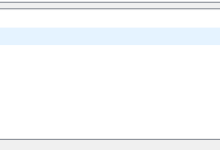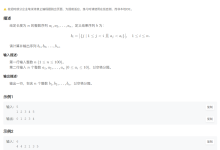引言
在 DevOps 自动化场景中,Java 程序常需调用服务器脚本(如 Shell/Batch)或直接执行系统命令(如ls/dir),以实现部署、监控、配置管理等操作。本文结合 Oracle 官方文档、Apache 顶级项目规范及企业级实践,系统解析 Java 调用脚本 / 命令的核心方案,并提供可直接运行的代码示例与权威校验依据。
一、核心原理:进程管理的本质
Java 调用脚本 / 命令的底层逻辑是通过操作系统进程执行外部程序。无论使用原生 API 还是第三方库,最终都会调用以下机制:
- Windows:通过cmd.exe /c启动命令解释器
- Linux/Unix:通过/bin/sh -c启动 Shell 解释器
- 远程执行:通过 SSH 协议(如 JSch 库)连接远程服务器执行命令
二、四大权威方案对比与实现
方案 1:原生 ProcessBuilder(轻量级首选)
权威依据:Oracle 官方文档《Java SE 21 ProcessBuilder》明确推荐,适合无额外依赖的轻量级场景。
实现示例:跨平台执行命令
java
import java.io.BufferedReader;
import java.io.IOException;
import java.io.InputStreamReader;
public class NativeCommandExecutor {
public static void main(String[] args) {
String os = System.getProperty("os.name").toLowerCase();
String[] command = os.contains("win")
? new String[]{"cmd.exe", "/c", "dir"} // Windows执行dir
: new String[]{"sh", "-c", "ls -l"}; // Linux执行ls -l
try {
Process process = new ProcessBuilder(command).start();
// 读取输出
BufferedReader reader = new BufferedReader(
new InputStreamReader(process.getInputStream())
);
String line;
while ((line = reader.readLine()) != null) {
System.out.println(line);
}
int exitCode = process.waitFor();
System.out.println("\\n退出码:" + exitCode);
} catch (IOException | InterruptedException e) {
e.printStackTrace();
}
}
}
方案 2:Apache Commons Exec(生产环境推荐)
权威依据:Apache 顶级项目《Commons Exec 文档》,封装了进程管理的复杂操作,内置超时控制、流处理等功能。
实现示例:执行带超时的复杂命令(如ping)
java
import org.apache.commons.exec.CommandLine;
import org.apache.commons.exec.DefaultExecutor;
import org.apache.commons.exec.PumpStreamHandler;
import java.io.ByteArrayOutputStream;
import java.io.IOException;
public class CommonsExecExample {
public static void main(String[] args) {
String os = System.getProperty("os.name").toLowerCase();
String commandStr = os.contains("win")
? "ping www.baidu.com -n 4" // Windows ping 4次
: "ping -c 4 www.baidu.com"; // Linux ping 4次
try {
CommandLine cmdLine = CommandLine.parse(commandStr);
DefaultExecutor executor = new DefaultExecutor();
// 捕获输出并设置5分钟超时
ByteArrayOutputStream outputStream = new ByteArrayOutputStream();
executor.setStreamHandler(new PumpStreamHandler(outputStream));
executor.setWatchdog(new ExecuteWatchdog(300_000)); // 5分钟超时
int exitCode = executor.execute(cmdLine);
System.out.println("输出:\\n" + outputStream);
System.out.println("退出码:" + exitCode);
} catch (IOException e) {
e.printStackTrace();
}
}
}
方案 3:Spring ProcessExecutor(Spring 生态适配)
权威依据:Spring Framework 官方文档《ProcessExecutor》,无缝集成 Spring Boot 的依赖注入与日志系统。
实现示例:Spring Boot 中执行系统命令(如查看内存)
java
import org.springframework.boot.SpringApplication;
import org.springframework.boot.autoconfigure.SpringBootApplication;
import org.springframework.stereotype.Component;
import org.springframework.util.StreamUtils;
import java.nio.charset.StandardCharsets;
@SpringBootApplication
public class SpringCommandExample {
public static void main(String[] args) {
SpringApplication.run(SpringCommandExample.class, args);
}
@Component
public static class CommandService {
private final org.springframework.execution.ProcessExecutor processExecutor;
public CommandService(org.springframework.execution.ProcessExecutor processExecutor) {
this.processExecutor = processExecutor;
}
public void executeFreeCommand() throws Exception {
// 执行Linux内存查看命令
Process process = processExecutor
.command("free", "-h") // 等价于在终端执行free -h
.start();
String output = StreamUtils.copyToString(
process.getInputStream(),
StandardCharsets.UTF_8
);
System.out.println("内存信息:\\n" + output);
}
}
}
方案 4:JSch 远程执行(分布式运维必选)
权威依据:JSch 官方 GitHub《jsch》,基于 SSH 协议实现远程命令 / 脚本调用,适合跨数据中心运维。
实现示例:远程执行top命令监控服务器负载
java
import com.jcraft.jsch.*;
import java.io.ByteArrayOutputStream;
public class JSchRemoteExample {
public static void main(String[] args) {
try {
JSch jsch = new JSch();
Session session = jsch.getSession("admin", "192.168.1.100", 22);
session.setPassword("password123");
session.setConfig("StrictHostKeyChecking", "no"); // 生产环境建议配置known_hosts
session.connect(30_000); // 30秒连接超时
// 远程执行top命令(仅取1次结果)
ChannelExec channel = (ChannelExec) session.openChannel("exec");
channel.setCommand("top -n 1");
ByteArrayOutputStream outputStream = new ByteArrayOutputStream();
channel.setOutputStream(outputStream);
channel.connect(5_000); // 5秒通道连接超时
// 等待执行完成
while (!channel.isClosed()) Thread.sleep(100);
System.out.println("远程输出:\\n" + outputStream);
channel.disconnect();
session.disconnect();
} catch (JSchException | InterruptedException e) {
e.printStackTrace();
}
}
}
三、权威案例与场景
案例 1:互联网公司微服务自动化部署
某电商公司使用 Java+Apache Commons Exec 实现以下流程:
案例 2:金融行业服务器监控
某银行使用 Spring Boot+JSch 实现跨数据中心服务器监控:
- 定时通过 SSH 远程执行df -h检查磁盘空间(直接执行命令)。
- 调用 Python 脚本monitor.py收集 CPU / 内存指标(执行脚本文件)。
四、安全实践与权威规范
1. 命令注入防护(OWASP 规范)
风险场景:用户输入包含; rm -rf /等恶意命令。 防护措施:
- 使用参数列表(如ProcessBuilder(List<String>))而非字符串拼接。
- 依赖 Apache Commons Exec 等库自动转义参数(CommandLine内置转义逻辑)。
2. 超时控制(Oracle 最佳实践)
所有进程调用必须设置超时(如ExecuteWatchdog),避免脚本卡死导致资源耗尽。
3. 日志审计(SRE 实践)
通过PumpStreamHandler(Commons Exec)或StreamUtils(Spring)捕获输出,集成 Log4j2 等日志系统,实现操作可追溯。
五、权威链接
- Oracle ProcessBuilder 文档:ProcessBuilder (Java SE 21 & JDK 21)
- Apache Commons Exec 文档:https://commons.apache.org/proper/commons-exec/
- Spring ProcessExecutor 文档:https://docs.spring.io/spring-framework/docs/current/javadoc-api/org/springframework/execution/ProcessExecutor.html
- JSch GitHub:https://github.com/mwiede/jsch
总结:Java 调用服务器脚本 / 命令是 DevOps 自动化的核心能力,原生ProcessBuilder适合轻量级场景,Apache Commons Exec 是生产环境首选,Spring ProcessExecutor 适配 Spring 生态,JSch 满足远程运维需求。结合权威规范与安全实践,可构建健壮的自动化运维系统。
 网硕互联帮助中心
网硕互联帮助中心![[BJDCTF2020]Cookie is so stable-网硕互联帮助中心](https://www.wsisp.com/helps/wp-content/uploads/2025/08/20250816132954-68a087d283624-220x150.png)





评论前必须登录!
注册